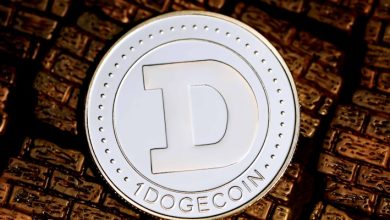Understanding Tokenomics: The Economics of Crypto Projects

- Exploring the basics of tokenomics in cryptocurrency projects
- Key concepts and principles of tokenomics explained
- The impact of tokenomics on the success of crypto projects
- Analyzing the role of tokens in the economics of blockchain ventures
- Strategies for designing effective tokenomics models
- Challenges and opportunities in navigating the world of token economics
Exploring the basics of tokenomics in cryptocurrency projects
Tokenomics is a crucial aspect of cryptocurrency projects that plays a significant role in determining the success and sustainability of a project. Understanding the basics of tokenomics is essential for investors and enthusiasts alike, as it provides insight into the economic structure and incentives within a project.
One key element of tokenomics is the token distribution model. This model outlines how tokens are allocated within the project ecosystem, including how many tokens are reserved for the team, early investors, advisors, and the community. A well-balanced token distribution model can help ensure fair participation and prevent centralization of token ownership.
Another important aspect of tokenomics is the token utility. Tokens within a project can serve various purposes, such as access to services or products, governance rights, or as a means of value transfer. Understanding the utility of a token can provide insight into its potential value and demand within the ecosystem.
Tokenomics also encompasses token supply and inflation mechanisms. The total supply of tokens, as well as the rate at which new tokens are minted, can have a significant impact on the token’s value and scarcity. Projects with limited token supply or deflationary mechanisms may be more attractive to investors due to their potential for increased value over time.
In conclusion, exploring the basics of tokenomics in cryptocurrency projects is essential for anyone looking to invest or participate in the crypto space. By understanding token distribution, utility, and supply dynamics, investors can make more informed decisions and identify projects with strong economic fundamentals.
Key concepts and principles of tokenomics explained
Tokenomics is a crucial concept in the world of cryptocurrencies. It refers to the economics of crypto projects and how their tokens function within the ecosystem. Understanding the key principles and concepts of tokenomics is essential for investors and users alike.
One of the fundamental principles of tokenomics is **scarcity**. Tokens are often designed to be scarce, which can drive up their value over time. This scarcity can be achieved through mechanisms such as **limited supply** or **burning** tokens.
Another important concept in tokenomics is **utility**. Tokens need to have a clear utility within the project or platform to hold value. This utility can come in the form of **governance rights**, **staking benefits**, or **access** to certain features.
**Incentives** play a significant role in tokenomics as well. Projects often use **incentive mechanisms** to encourage users to participate in the ecosystem. This can include **rewards** for certain actions or **penalties** for undesirable behavior.
**Token distribution** is another key aspect of tokenomics. How tokens are distributed among stakeholders can have a significant impact on the project’s **decentralization** and **governance**. Projects need to carefully consider their token distribution to ensure a fair and **equitable** ecosystem.
Overall, tokenomics is a complex but essential part of understanding the economics of crypto projects. By grasping these key concepts and principles, investors and users can make more informed decisions about which projects to support and participate in.
The impact of tokenomics on the success of crypto projects
The impact of tokenomics on the success of cryptocurrency projects cannot be understated. Tokenomics refers to the economics of a digital token, including its distribution, utility, and overall value proposition. By carefully designing the tokenomics of a project, developers can create a system that incentivizes user participation and rewards early adopters.
One key aspect of tokenomics is the token distribution model. By allocating tokens in a fair and transparent manner, projects can build trust among their community and ensure widespread adoption. Additionally, the utility of the token plays a crucial role in its success. Tokens that serve a clear purpose within the ecosystem are more likely to retain long-term value and attract users.
Furthermore, the overall value proposition of a token is essential for its success. Projects that can clearly articulate why their token is valuable and how it will appreciate over time are more likely to attract investors and users. By aligning the interests of all stakeholders, from developers to users to investors, projects can create a sustainable and successful ecosystem.
Analyzing the role of tokens in the economics of blockchain ventures
The role of tokens in the economics of blockchain ventures is crucial to understand when analyzing the financial aspects of crypto projects. Tokens serve as a form of digital asset that can represent various values within a blockchain ecosystem. These values can range from utility tokens used to access a platform or service, to security tokens that represent ownership in a company or project.
By issuing tokens, blockchain ventures can raise funds through initial coin offerings (ICOs) or token sales. These funds can then be used to develop and expand the project, creating a self-sustaining ecosystem. Additionally, tokens can be traded on cryptocurrency exchanges, allowing investors to buy and sell them based on market demand.
Furthermore, tokens play a key role in incentivizing user participation within a blockchain network. For example, users may be rewarded with tokens for contributing computing power to validate transactions (proof of work) or for holding tokens in a wallet to secure the network (proof of stake). This incentivization mechanism helps ensure the security and stability of the blockchain.
Strategies for designing effective tokenomics models
When it comes to creating a successful tokenomics model for a crypto project, there are several strategies that can be employed to ensure its effectiveness. One key aspect to consider is the distribution of tokens, as this can have a significant impact on the overall value and utility of the token. By carefully designing a distribution plan that is fair and transparent, developers can help to build trust and confidence among potential investors.
Another important factor to consider is the token supply. By carefully managing the total supply of tokens and implementing mechanisms such as token burning or staking, developers can help to create scarcity and drive up demand for the token. This can help to increase its value over time and reward early adopters.
Furthermore, it is crucial to consider the economic incentives built into the tokenomics model. By creating ways for token holders to earn rewards or participate in governance decisions, developers can help to incentivize holding onto the token and actively participating in the project. This can help to create a strong and engaged community around the token.
Overall, designing an effective tokenomics model requires careful consideration of various factors such as token distribution, supply management, and economic incentives. By taking the time to thoughtfully design these aspects of the model, developers can help to create a sustainable and successful crypto project with a strong foundation for growth.
Challenges and opportunities in navigating the world of token economics
Navigating the world of token economics presents both challenges and opportunities for investors and project developers alike. Understanding the intricacies of tokenomics is essential for making informed decisions in the fast-paced world of cryptocurrency. One of the main challenges is the volatility of token prices, which can fluctuate dramatically in a short period. This volatility can present opportunities for traders to profit but also poses risks for those who are not prepared for sudden price swings.
Another challenge is the lack of regulation in the crypto space, which can lead to fraudulent projects and scams. Investors need to conduct thorough research before investing in any token to ensure its legitimacy. On the flip side, the decentralized nature of cryptocurrencies also presents opportunities for innovation and disruption in various industries. Tokenomics can enable new business models and ways of raising capital that were previously not possible.
In navigating the world of token economics, it is crucial to stay informed about market trends, technological developments, and regulatory changes. Engaging with the crypto community, attending conferences, and following reputable sources can help investors and developers stay ahead of the curve. By understanding the economics of crypto projects, individuals can make smarter investment decisions and contribute to the growth and development of the blockchain ecosystem.



